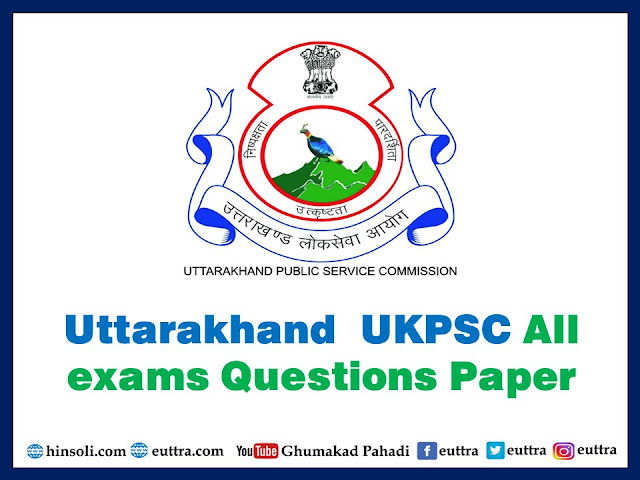 |
| DRDO-BEL VHF-SR Anti-Stealth Radar| |
DRDO-BEL VHF-SR Anti-Stealth Radar
Introduction
In the rapidly evolving landscape of modern warfare, stealth technology has emerged as a pivotal advantage for many advanced air forces. Stealth aircraft are designed to avoid detection by radar and other surveillance systems, allowing them to strike targets with minimal risk. In response to this emerging threat, nations across the globe have invested heavily in anti-stealth detection technologies. India, recognizing this necessity, has taken a significant leap forward with the development of the VHF-SR (Very High Frequency Surveillance Radar) by the Defence Research and Development Organisation (DRDO) in collaboration with Bharat Electronics Limited (BEL).
This indigenous anti-stealth radar system is a crucial component of India’s air defense strategy. It is designed specifically to detect, track, and provide early warning against stealth aircraft, drones, and other low-observable airborne threats. This essay explores the development, technology, strategic importance, operational capabilities, and global relevance of the DRDO-BEL VHF-SR radar system in detail.
Background and Development
The emergence of stealth aircraft like the American F-22 Raptor, F-35 Lightning II, and China's Chengdu J-20 posed new challenges for traditional radar systems. These aircraft use shape design, radar-absorbing materials, and electronic warfare capabilities to minimize their radar cross-section (RCS), making them nearly invisible to conventional radars operating in high-frequency bands.
India’s defense planners foresaw the need for a radar system that could counteract these advancements. Thus, the DRDO and BEL embarked on a project to develop an indigenous VHF-band radar capable of detecting stealth aircraft. The collaboration between these two premier defense organizations was not only driven by the need to enhance India’s air defense capabilities but also by the larger vision of achieving self-reliance in strategic technologies under the "Atmanirbhar Bharat" initiative.
The VHF-SR project was conceptualized to serve as a long-range, mobile, anti-stealth radar capable of detecting targets that conventional radars might miss. Its development involved significant research in radar physics, antenna design, signal processing, and electronic warfare countermeasures.
Technical Specifications and Features
The DRDO-BEL VHF-SR radar is built with state-of-the-art technology tailored for detecting low-observable aerial threats. Here are the key features and specifications:
Frequency Band and Wavelength
- VHF (Very High Frequency) band operates in the 30–300 MHz range.
- VHF radars use longer wavelengths (1 to 10 meters) compared to S or X-band radars.
- These long wavelengths resonate with the size of stealth aircraft components, making them more visible on radar.
AESA Technology
- Uses Active Electronically Scanned Array (AESA) for beam steering and faster target acquisition.
- Enables multi-target tracking and high-resolution imaging.
Detection Capabilities
- Capable of detecting stealth aircraft at ranges exceeding 300 km, depending on altitude and environmental factors.
- Designed for high clutter rejection and electronic counter-countermeasures (ECCM).
Mobility
- Mounted on high-mobility platforms, allowing quick deployment and redeployment.
- Suitable for use in diverse terrain including high-altitude regions.
Integration Capabilities
- Seamlessly integrates with India’s Integrated Air Command and Control System (IACCS).
- Can function in conjunction with Surface-to-Air Missile (SAM) systems, AWACS, and fighter aircraft.
Anti-Stealth Capabilities
Why Stealth is Hard to Detect
Stealth aircraft are built with angular surfaces and coated with radar-absorbent materials that scatter or absorb radar waves, making them appear smaller or even invisible on conventional radars, especially those operating at high frequencies.
How VHF Radars Detect Stealth
- VHF-band radars have longer wavelengths, which interact more effectively with large surfaces of stealth aircraft.
- These waves tend to resonate with certain aircraft parts (like wings and fuselage edges), enhancing detection.
- While VHF radars have lower resolution, they are ideal for early warning and cueing other systems.
Complementary Role
- VHF-SR doesn't replace existing radars but works in tandem.
- Once it detects a stealth aircraft, it cues higher-frequency radars or missile systems for engagement.
Integration into Indian Defense Network
The DRDO-BEL VHF-SR radar has been designed with strategic deployment in mind:
Networked Air Defense
- Integrated into the IACCS, enhancing situational awareness.
- Contributes to multi-layered defense architecture including low, medium, and high-altitude coverage.
Mobile Deployment
- Its modular design allows quick transport and setup.
- Suited for deployment in forward areas, coastal zones, and border regions.
Joint Operations
- Can support both Air Force and Army operations.
- Enhances inter-operability with indigenous missile systems like Akash, MR-SAM, and XRSAM (in development).
Comparison with Global Anti-Stealth Radars
Russia’s Nebo-M
- Operates in VHF and UHF bands.
- Advanced version includes 3D tracking and AESA.
- India’s VHF-SR is comparable in concept, though scaled for Indian requirements.
China’s JY-27A
- Claimed to detect stealth aircraft like F-22 at long ranges.
- Also VHF-based but lacks transparent technical details.
Western Systems
- The US has focused more on stealth technology rather than counter-stealth VHF systems.
- NATO relies on a combination of infrared tracking, passive radar, and networked sensors.
India's Edge
- DRDO-BEL system is indigenously developed and customized for Indian terrain and threats.
- Reduces reliance on foreign imports and provides operational sovereignty.
Strategic Importance for India
Addressing Regional Threats
- Counters stealth-capable aircraft like China’s J-20 and future F-35 deployments in the Asia-Pacific.
- Enhances surveillance over Himalayan borders, Indian Ocean Region (IOR), and North-East India.
Force Multiplier
- Acts as a force multiplier for existing assets like Su-30 MKI, Tejas, and AWACS.
- Provides pre-emptive detection capabilities.
Atmanirbhar Bharat
- Showcases India's capability in cutting-edge defense technology.
- Boosts the domestic defense industry and export potential.
Challenges in Development
Despite its successful deployment, the VHF-SR radar faced numerous developmental hurdles:
Technical Hurdles
- Building efficient VHF-band AESA modules.
- Achieving optimal signal-to-noise ratio and resolution at long ranges.
Environmental Interference
- VHF signals are prone to atmospheric disturbances.
- Required advanced filtering and signal processing algorithms.
Deployment Logistics
- Making the system mobile while retaining high power output and antenna size.
- Ensuring it can be deployed rapidly in remote locations.
Future Enhancements and Roadmap
The DRDO and BEL continue to improve the radar’s performance:
3D Tracking
- Future upgrades will include 3D target tracking for better interception accuracy.
AI Integration
- Artificial Intelligence (AI) and machine learning will be incorporated for faster threat analysis and pattern recognition.
Space-Based VHF Sensors
- Research is underway on satellite-based VHF radar systems for wider surveillance coverage.
Drone Defense
- Integration with anti-drone systems for detecting low-flying swarm drones.
Miniaturization
- Efforts to make a compact version for deployment in mountainous regions or on naval platforms.
Conclusion
The DRDO-BEL VHF-SR anti-stealth radar is a remarkable achievement in India's defense landscape. It marks a new era in the detection and neutralization of stealth threats that have traditionally outpaced conventional surveillance systems. The radar not only strengthens India's defensive capabilities but also affirms its position as a technological leader in indigenous defense development.
As stealth technologies become more sophisticated, India’s proactive development of counter-stealth solutions reflects a mature and forward-thinking defense policy. The VHF-SR, therefore, stands as a strategic asset, a symbol of self-reliance, and a cornerstone of India’s 21st-century air defense doctrine.

.jpg)

















Follow Us